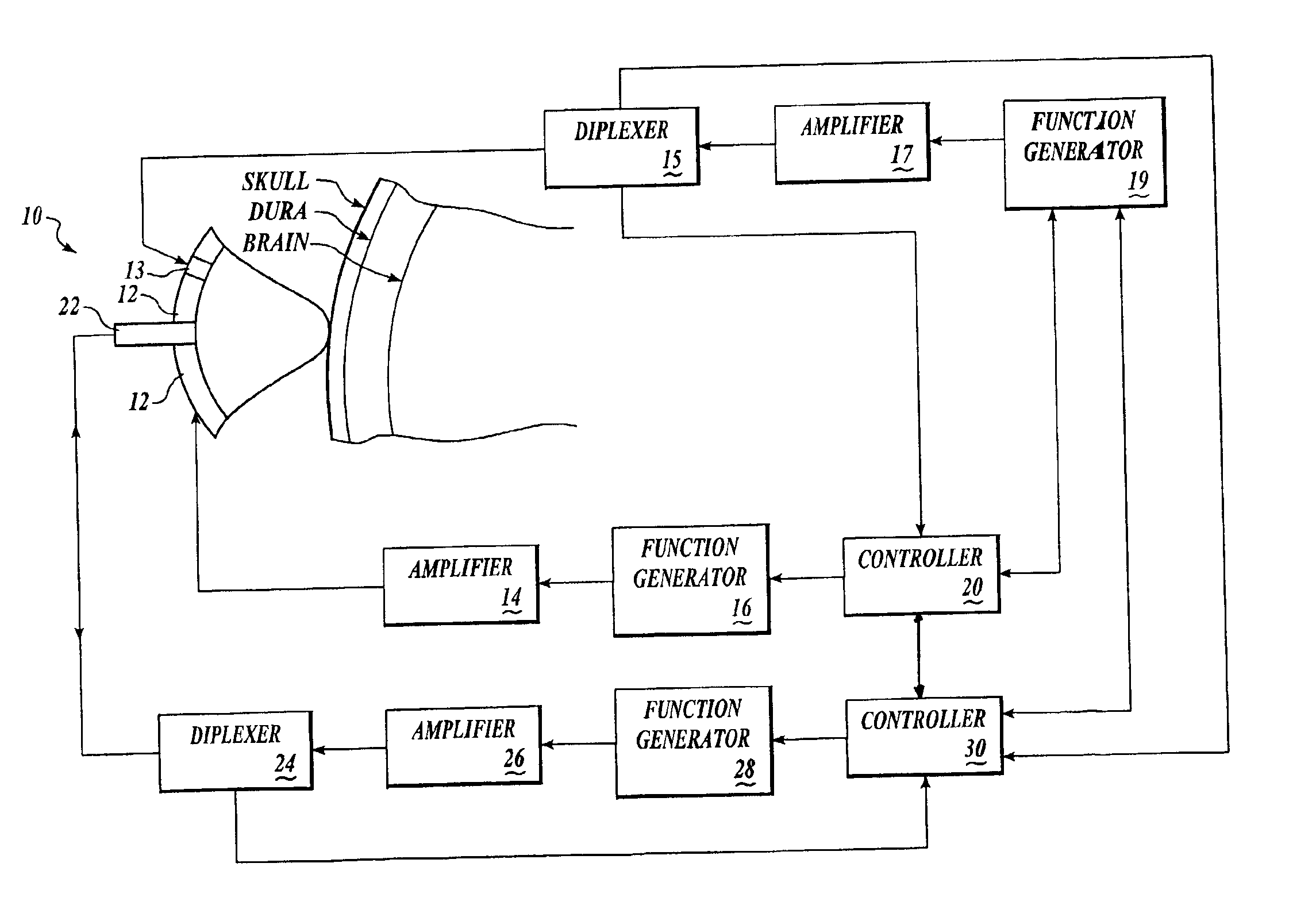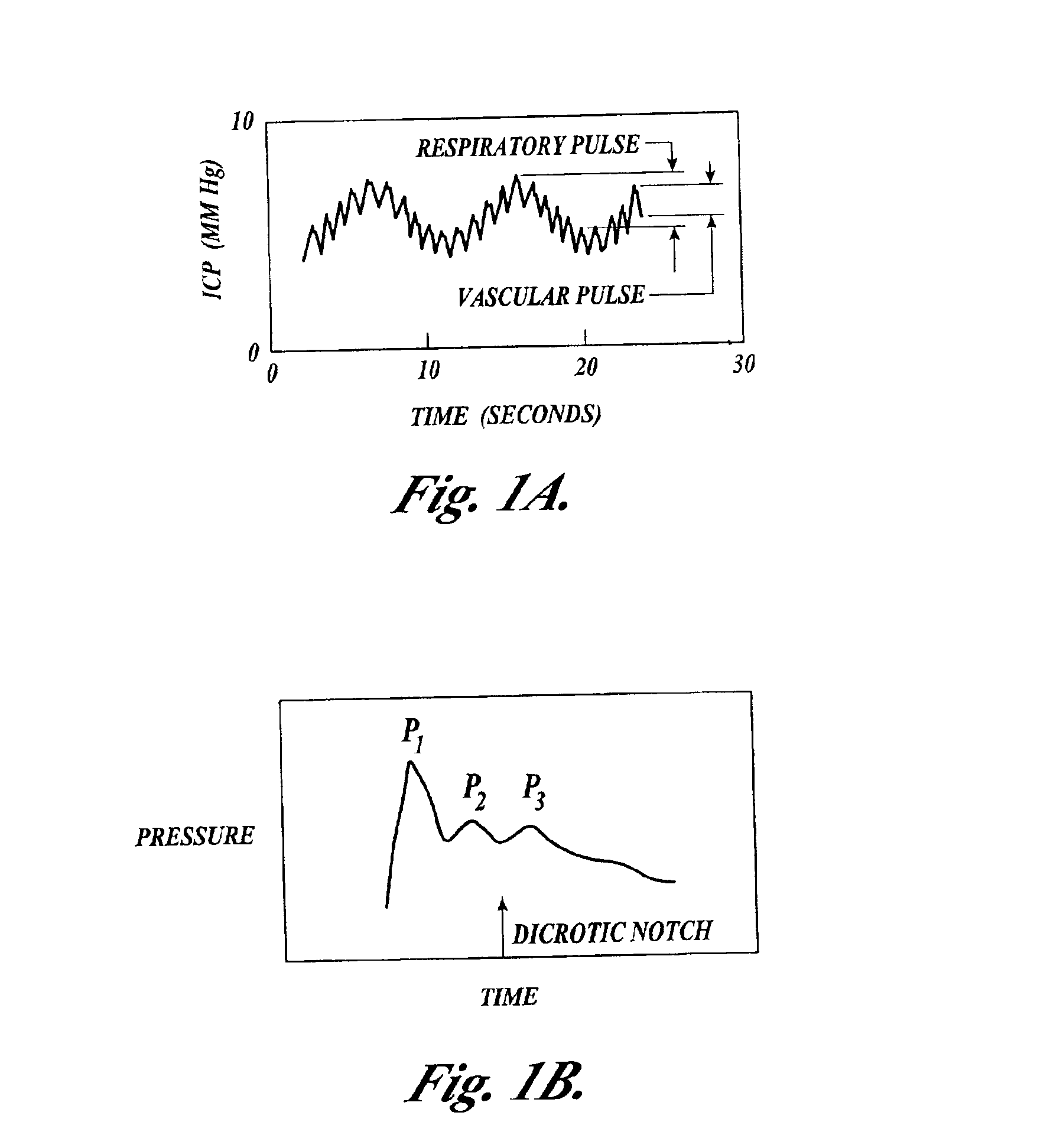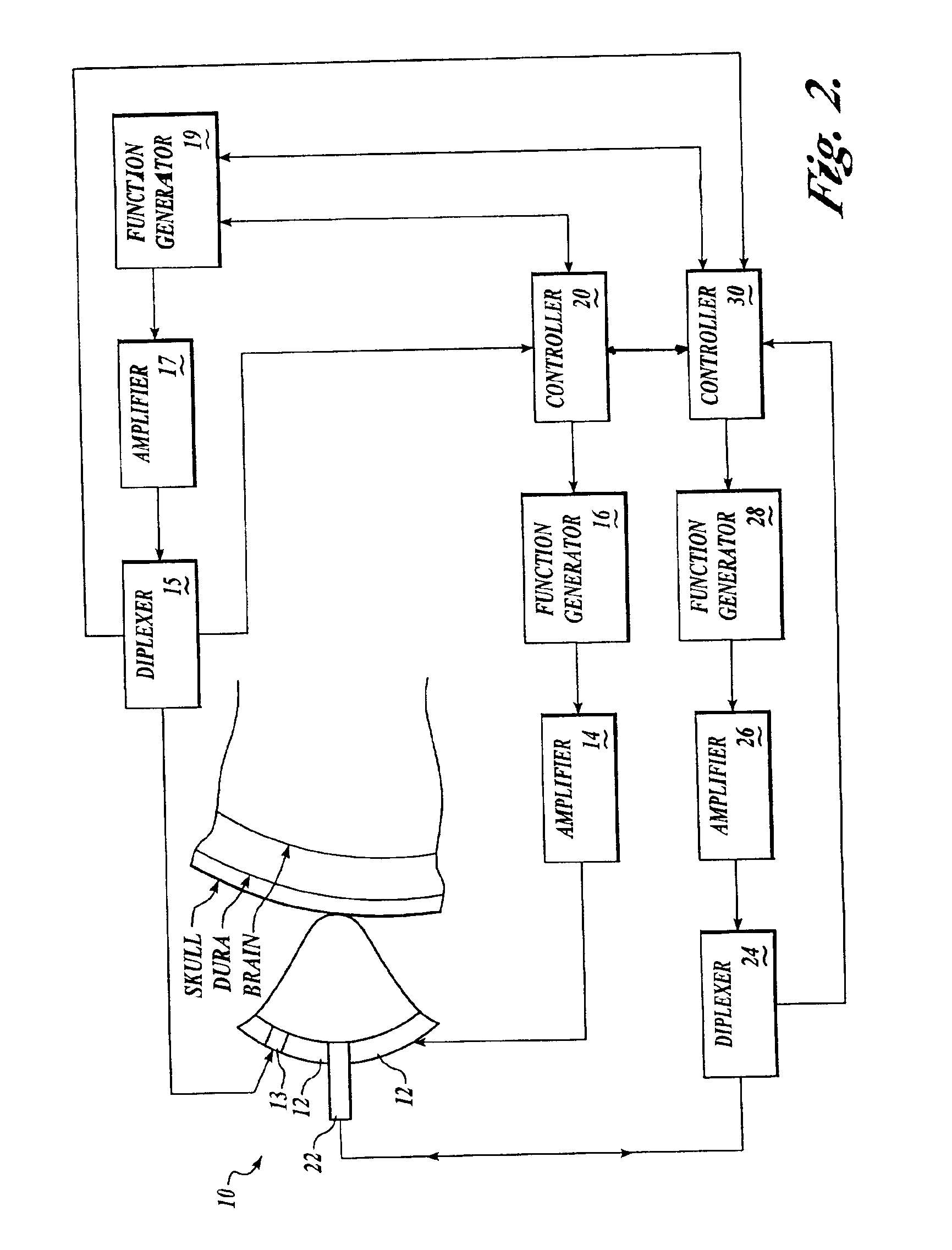Systems and methods for making noninvasive physiological assessments
a physiological assessment and non-invasive technology, applied in the field of systems and methods for making non-invasive physiological assessments, can solve the problems of difficult characterization of internal tissues using non-invasive and non-traumatic techniques, unreliability, and difficulty in non-invasive detection of various cancers, and achieve the effect of improving the accuracy of assessmen
- Summary
- Abstract
- Description
- Claims
- Application Information
AI Technical Summary
Benefits of technology
Problems solved by technology
Method used
Image
Examples
example 1
We have shown in vitro (FIG. 6A) and in vivo (FIGS. 6B-D) and describe in detail below, that intrinsic displacements of brain tissue (e.g. compressions and distensions), and their various acoustic scatter properties, can be directly measured using a standard transcranial Doppler (TCD) transducer, off-the-shelf data acquisition systems, and novel analysis of the acoustic backscatter signal from brain.
An in vitro model for examining changes in ICP using acoustic techniques was constructed using fresh bovine brain immersed in fluid in a water-tight, visually and acoustically transparent bottle attached to a hand-pump for changing the pressure on the brain. An acoustic transducer (ATL / Philips Medical Systems, Bothell, Wash.), and the bottle, were placed in water so that the focus of the interrogation transducer was near the edge of the brain, but within the brain. Using a transducer whose amplifier was driven at 200 mV and a LeCroy Waverunner oscilliscope, we collected acoustic waveform...
example 2
We have shown, in vitro, using a beef brain model similar to that described above, that a palpation pulse of ultrasound across a range of acoustic intensities can cause increasing displacements of brain without causing gross tissue damage.
Fresh bovine brain was immersed in fluid in a water-tight, visually and acoustically transparent bottle attached to a hand-pump for changing the pressure on the brain. ATL acoustic transducers (ATL-Philips Medical Systems, Bothell, Wash.), and the bottle, were placed in water so that the focus of the acoustic palpation and interrogation transducers were near the edge of the brain, but within the brain. Using LeCroy Waverunner oscilloscope, we collected acoustic interrogation waveforms backscattered from brain. For palpating and interrogating beef brain, in vitro, the interrogation pulses were administered as described with respect to FIG. 6A, while the palpation pulses had a pulse repetition frequency of 1 Hz, contained 30,000-50,000 cycles, and ha...
example 3
Existing transcranial Doppler (TCD) devices and controllers may be modified to process raw data relating to tissue displacement according to methods and systems of the present invention. As data, such as Doppler information, is acquired by an ultrasound transducer / receiver, it is conventionally passed through a set of filters designed to eliminate portions of the signal attributable to the motion of the vessel wall, tissue displacement, CSF perturbation etc., leaving only the portion of the signal attributable to blood flow for subsequent transcranial Doppler analysis. For the present application, the unfiltered signal acquired by a TCD device, including portions of the signal attributable to blood vessel wall motion, brain tissue displacement and CSF pertubation, as well as blood flow, may be used according to methods of the present invention to assess CSF tissue properties, such as ICP.
Unfiltered data acquired by an ultrasound transducer / receiver in a TCD or a similar device may b...
PUM
 Login to View More
Login to View More Abstract
Description
Claims
Application Information
 Login to View More
Login to View More - R&D
- Intellectual Property
- Life Sciences
- Materials
- Tech Scout
- Unparalleled Data Quality
- Higher Quality Content
- 60% Fewer Hallucinations
Browse by: Latest US Patents, China's latest patents, Technical Efficacy Thesaurus, Application Domain, Technology Topic, Popular Technical Reports.
© 2025 PatSnap. All rights reserved.Legal|Privacy policy|Modern Slavery Act Transparency Statement|Sitemap|About US| Contact US: help@patsnap.com



